Transcription of Immune Globulin Intravenous (Human) 5% …
1 Immune Globulin Intravenous ( human ) 5%. Solvent/Detergent Treated OCTAGAM . License No. 1646. Rx only DESCRIPTION. lmmune Globulin Intravenous ( human ) [IGIV], OCTAGAM, is a solvent/detergent treated, sterile, 5% liquid preparation of highly purified immunoglobulin G (IgG) derived from large pools of human plasma. All units of human plasma used in the manufacture of OCTAGAM are provided by FDA approved blood establishments only, and are tested by FDA-licensed serological tests for HBsAg, antibodies to HCV and HIV and Nucleic Acid Test (NAT) for HCV and HIV-1 and found to be nonreactive (negative). The product is manufactured by the Cohn-Oncley cold ethanol fractionation process followed by ultrafiltration and chromatography.
2 The manufacturing process includes treatment with an organic solvent/detergent (S/D) mixture composed of tri-n-butyl phosphate (TNBP) and Triton X-100. The OCTAGAM manufacturing process provides a significant viral reduction in in vitro studies (table 1). These reductions are achieved through a combination of process steps including Cohn fractionation, S/D treatment and pH 4 treatment. Table 1: In vitro reduction factor during OCTAGAM manufacturing In vitro reduction factor [log10]. Production step Enveloped viruses Non-enveloped viruses WNV HIV-1 PRV SBV MEV PPV SV40. Cohn fractionation Not applicable (non-enveloped S/D treatment viruses).
3 PH4 treatment Global reduction factor HIV-1: human Immunodeficiency Virus - 1. PRV: Pseudorabies Virus SBV: Sindbis Virus MEV: Mouse Encephalomyelitis Virus PPV: Porcine Parvovirus SV40: Simian Vacuolating 40 Virus WNV: West Nile Virus Octagam PI 30th March page 1. The composition of OCTAGAM is as follows: Component Quantity/ml Protein, of which 96% is human normal immunoglobulin G 50 mg Maltose 100 mg Triton X-100 5 mcg TNBP 1 mcg IgA mg IgM mg Water for Injection ad. This preparation contains approximately 50 mg of protein per ml (5%) of which not less than 96% is human normal immunoglobulin G. OCTAGAM contains 3% aggregates, 90% monomers and dimers and 3% fragments.
4 The sodium content of the final solution is 30 mmol/l and the pH is between and The osmolality is 310 - 380 mosmol/kg. The manufacturing process for OCTAGAM isolates IgG without additional chemical or enzymatic modification, and the Fc portion is maintained OCTAGAM contains the IgG antibody activities present in the donor population. IgG subclasses are fully represented with the following approximate percents of total IgG3: IgG1 is 65%, IgG2 is 30%, IgG3 is 3% and IgG4 is 2%. OCTAGAM contains a broad spectrum of IgG antibodies against bacterial and viral agents that are capable of opsonization and neutralization of microbes and toxins.
5 OCTAGAM contains no preservative and no sucrose. CLINICAL PHARMACOLOGY. Peak levels of IgG are reached immediately after infusion of OCTAGAM. It has been shown that after infusion, exogenous IgG is distributed relatively rapidly between plasma and extravascular fluid until approximately half is partitioned in the extravascular space. Therefore a rapid initial drop in serum IgG is Studies show that the apparent half-life of OCTAGAM is approximately 40 days in immunodeficient patients. Previous studies reported endogenous IgG half-life values of 25 to 30 Octagam PI 30th March page 2. The main pharmacokinetic parameters of OCTAGAM, measured as total IgG in study OCTA-06 are displayed below: Table 2: PK Parameters of OCTAGAM 5% (Study OCTA-06).
6 OCTAGAM 5%. N Mean SD Median Cmax (mg/mL) 14 AUC (mg*h/mL) 14 7022 1179 7103. T1/2 (days) 14 Trough IgG Level 19 859. 21 Day Infusion Schedule (mg/dL). Trough IgG Level 25 760. 28 Day Infusion Schedule (mg/dL). The half-life of lgG can vary considerably from person to person. In particular, high concentrations of lgG and hypermetabolism associated with fever and infection have been seen to coincide with a shortened half-life of IgG. Longer half-lives are often seen with immunodeficient In an open-label, multicenter study, 46 patients (including 10 patients between the ages of 2 and 12, and one 15 years old) with Primary Immune Deficiency (PID) received OCTAGAM individualized doses of 300 - 600 mg/kg every 3 or 4 weeks for 12 months.
7 For the primary endpoint, which was the number of episodes of serious infections, the observed rate was infections per patient per year (5 infections over patient- years). On average, days of hospitalization per patient were documented, and for days patients were absent from work or school. The mean number of visits to a physician or emergency room was also very low (n=2). Table 3: Summary of Secondary Efficacy Variables Total Days or Subjects Total Days Variable Subject Visits/Subject/Year N % or Visits Years Estimate Work/School Days 30 65 241 Missed Days in Hospital 4 9 16 Visits to 27 59 92 Physician/ER. Octagam PI 30th March page 3.
8 INDICATIONS AND USAGE. Primary Immune Deficiency Diseases OCTAGAM is indicated for the treatment of primary Immune deficient diseases, such as: congenital agammaglobulinemia and hypogammaglobulinemia, common variable immunodeficiency, Wiskott-Aldrich syndrome and severe combined immunodeficiencies. This indication was supported by a study in 46 patients who received a total of 654. infusions. CONTRAINDICATIONS. Intolerance to homologous immunoglobulins, especially in very rare cases of immunoglobulin A (IgA) deficiency, when the patient has IgE mediated antibodies to IgA. WARNINGS. Immune Globulin Intravenous ( human ) (IGIV) products have been reported to be associated with renal dysfunction, acute renal failure, osmotic nephrosis, and death16.
9 Patients predisposed to acute renal failure include patients with any degree of pre-existing renal insufficiency, diabetes mellitus, age greater than 65, volume depletion, sepsis, paraproteinemia, or patients receiving known nephrotoxic drugs. Especially in such patients IGIV products should be administered at the minimum concentration available and the minimum rate of infusion practicable. While these reports of renal dysfunction and acute renal failure have been associated with the use of many of the licensed IGIV products, those containing sucrose as stabilizer accounted for a disproportionate share of the total number.
10 OCTAGAM does not contain sucrose. See PRECAUTIONS and DOSAGE AND ADMINISTRATION sections for important information intended to reduce the risk of acute renal failure. Immune Globulin Intravenous ( human ), OCTAGAM, should only be administered intravenously. Other routes of administration have not been evaluated. OCTAGAM should be given at the infusion rate under DOSAGE AND. ADMINISTRATION at least until the physician has had adequate experience with a given patient. Immediate anaphylactic and hypersensitivity reactions are a rare Epinephrine should be available for treatment of any acute anaphylactoid reactions. OCTAGAM contains only trace amounts of IgA ( mg/ml in a 5% solution).

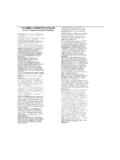

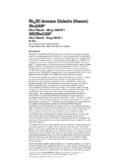

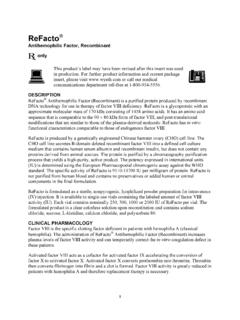

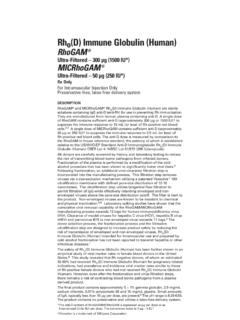
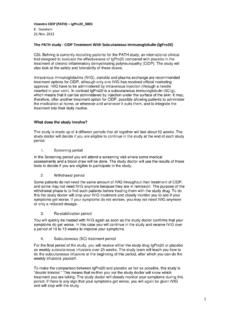

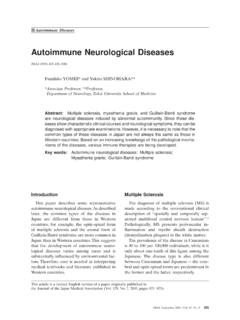


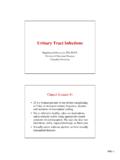

![(See DOSAGE and ADMINISTRATION [2.4.], …](/cache/preview/9/e/3/e/9/3/6/8/thumb-9e3e936878209d5fde0ef15a4eba9055.jpg)